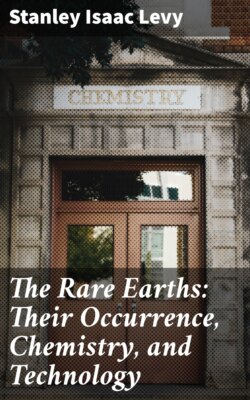Читать книгу The Rare Earths: Their Occurrence, Chemistry, and Technology - Stanley Isaac Levy - Страница 174
На сайте Литреса книга снята с продажи.
Delorenzite.
Оглавление[56]—A compound similar to the above, but even richer in titanium dioxide, which amounts to 66 per cent. Tin dioxide is also present, with traces of columbic anhydride. The bases are the yttria earths (almost free from ceria earths), uranium dioxide, and some ferrous oxide, the formula being 2FeO,UO₂,2Y₂O₃,24TiO₂, with a little SnO₂ replacing TiO₂. It is strongly radioactive. Its closest chemical neighbour is yttrocrasite, but in appearance and angles it closely resembles polycrase (q.v.). Its discoverer, Zambonini, therefore formulates it as a metatitanate with titanium acting also as a base—polycrase is a mixed metatitanate and metacolumbate—thus, 2FeTiO₃ + U(TiO₃)₂ + 2Y₂(TiO₃)₃ + 7(TiO)TiO₃.
[56] Zambonini, Zeitsch. Kryst. Min. 1908, 45, 76.
The crystals occur in aggregates of numerous individuals in sub-parallel growth. The system is orthorhombic; a: b: c = 0·3375: 1: 0·3412. Usual forms—the pinakoids a {100} and b {010} with prism m {110}, dome d {201}, etc. Habit prismatic, elongated ∥ c axis. Hardness 51⁄2-6; sp. gr. about 4·7.
It was found with struvite in a pegmatite at Craveggia, Piedmont, Italy.
